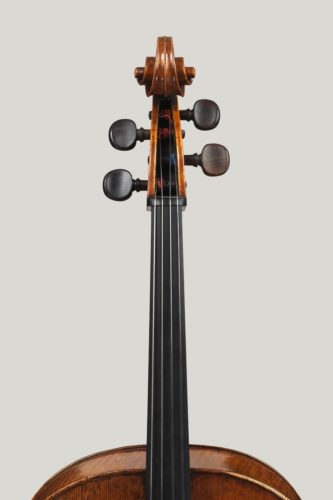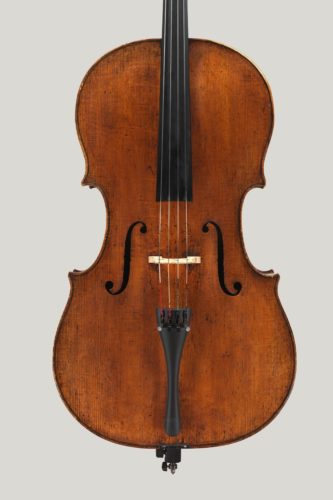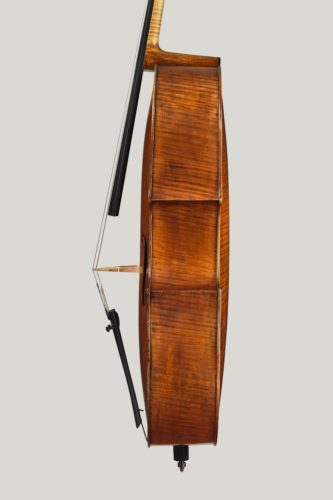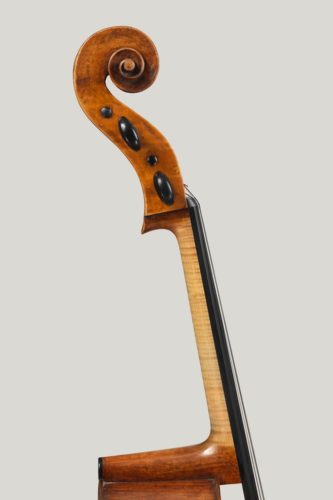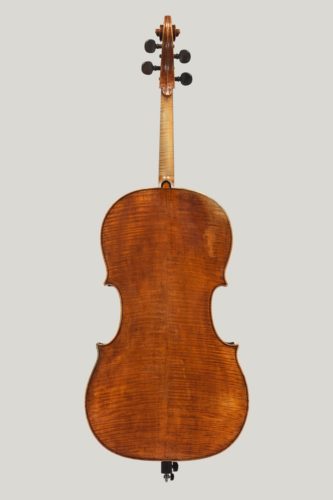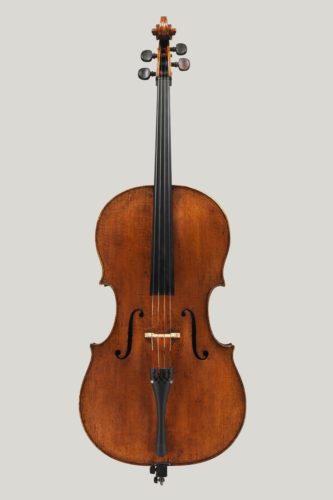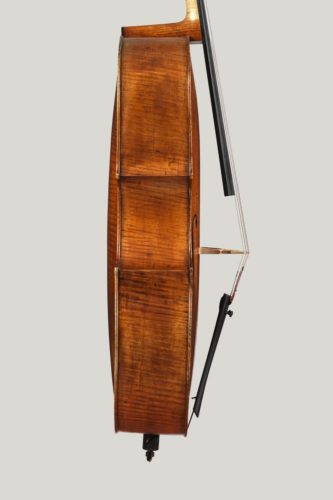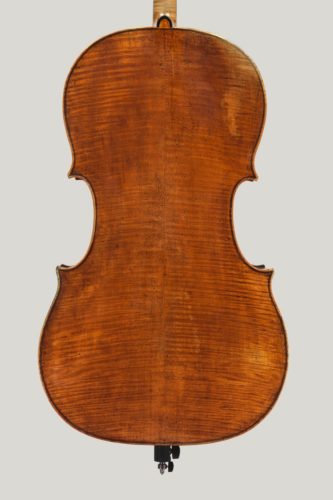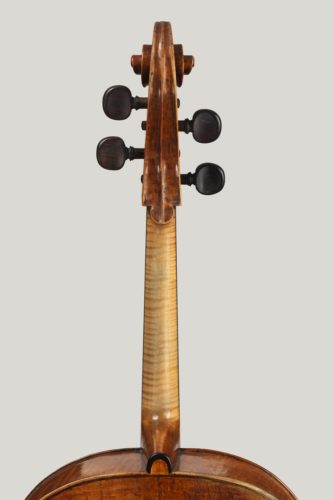Giovanni Baptista Rogeri
Cello made by Giovanni Baptista Rogeri in Brescia in 1695. Øystein Sonstad plays on this instrument.
The Cremonese art of lutherie was contained within a handful of parishes in the city until the late 17th century. Nicolò Amati was the first maker to take on apprentices from outside his family, and even from beyond Cremona itself. Giovanni Battista Rogeri, who worked for him in 1661-2, came from Bologna, where he was born in about 1642.
By 1664 he had moved to Brescia, a city with a long history of lute, viol and violin making in the 16th century, culminating with two important violinmakers, Gaspar da Salò and his pupil Giovanni Paolo Maggini. Maggini died in 1632 during a virulent visitation of plague, which left he city bereft of craftsmen and struggling to restore its cultural life. Rogeri contributed to its renaissance with a prolific series of elegant and distinctive violins and cellos that are greatly valued today.
Rogeri’s style is fascinating. His Cremonese inspired elegance of finish and attention to detail were quite at odds with the very free and improvisatory style of the earlier Brescian makers. His technique is of the highest order, and produced a distinctive style of his own. His soundholes are long and narrow, the arching slightly flattened and square in cross-section, and the scrolls made with a very flat undercut. The edges in particular are sharply defined and the corners long and beautifully shaped, and the materials consistently of the very best quality.
The cello belonging to Dextra Musica is a splendid example of his style. Rogeri was an early adherent of the smaller cello form which has become the modern standard. The outline of the cello is typically rather square and broad, but beautifully detailed and executed. The wood of the back is a typically magnificent piece of maple with a deep rippling flame, entirely uninterrupted by any flaw or irregularity, with the same wood used for the sides. On the front, the spruce is of equal quality, with straight and even grain marked with a light shimmering of hazel figure. The scroll itself is not original, but is the work of his similarly named Cremonese contemporary Francesco Rugeri, fitted during restoration in more recent times. Overall it has a fine complement of original soft oil varnish, tinted with pale golden-brown pigments and lit beneath by a very reflective ground coat.
Such is the quality of the work, the stunning visual effect and the magnificent sound of the cello, it is not so surprising that it was once thought to be a Stradivari, and gained the name of “the Lancashire Strad” in England in the 19th century. It has an interesting history; brought from Italy early in that century by the celebrated cellist John Crosdill, it was subsequently owned by the Prince of Wales, later King George IV. From the Royal collection it passed to the Duke of Cambridge, and then finally to the London dealer George Corsby. It was he who designated it a Stradivari when he sold it to a Mr Shuttleworth. It later joined the fine collection of Richard Bennett of Southport in Lancashire, and gained its erroneous name. W.E. Hill & Sons then bought the cello from Bennett, and it has since passed through several owners, most recently the American cellist Donald McCall, before its acquisition by Dextra Musica.
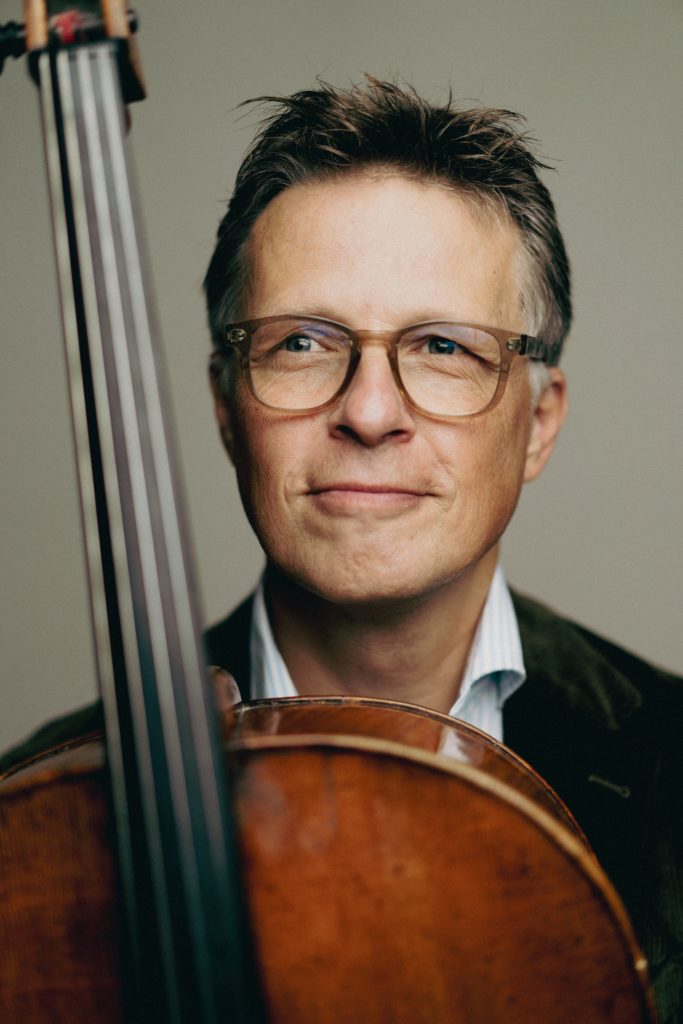
Øystein Sonstad
Øystein Sonstad (b. 1970) is among the most popular of Norwegian cellists. He is a solo cellist in the Norwegian Chamber Orchestra and previously had the same position in the National Radio Broadcasting Orchestra. He is a member of the Oslo String Quartet and of The Diamond Ensemble. He is also active as a composer.
